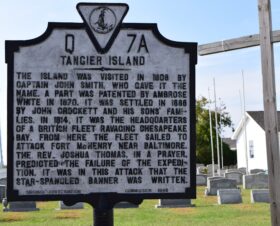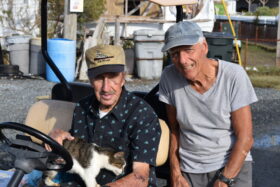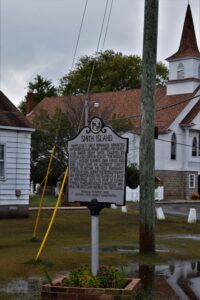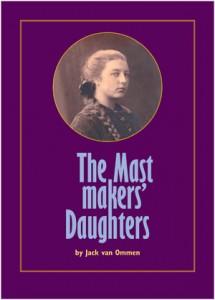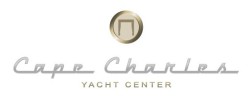I am writing this while crossing the Chesapeake from Tangier Island to the mouth of the Rappahannock River, on the Virginia mainland. The weather forecast for tomorrow and Sunday changed my plans to stay on the island until Monday morning. And after arriving from Crisfield, Maryland, on the island in the early afternoon, I did not have much more to explore there. The weather was superb for these pictures.
I had wanted to attend the United Methodist church service on Sunday. But that will have to wait for another occasion. I found many similarities on both Smith Island and Tangier Island that remind me of the stories our mother told us about her visits to the island of Urk in the Zuiderzee. Our grandfather, Jan Siebold de Vries, found his bride on the island of Urk. He sold the fishermen the spars and rigging for their sailing fleet. The same tight communities that made their living harvesting the crops of the salt water estuaries and the deep sea. Both have a very close connection to their faith. Urk is still known world- wide for their men church choirs, I have been told that the fishermen on Tangier are also good singers.
I quote from the blog I wrote when I visited the island of Urk with my youngest daughter and granddaughter, on “Fleetwood” in 2010:
“It was another fast sail with a 20 plus knot breeze to Urk, right across the IJselmeer. Jeannine and I were just checking out the town and heard singing from the Bethel Christian Reformed Church. It turned out that the weekly communal church singing summer program had just started. The Urkers are known for their love of choir singing. They have several large men’s choirs who perform in Urker traditional costume all over the world. My mother has written about her recollections as a young girl on the island of Urk when the fishermen sang at a special occasion of a royal visit to the island. My grandfather met his wife on the island of Urk and was married here in 1900. The Bethel church was where my great grandfather, van Anken, was the Christian Reformed minister at that time. The church was full and Gabrielle could hear us 10 blocks away on the boat in the harbor. I joined with gusto as I was taught by my upbringing in the forties/fifties. There was a men’s choir from Elspeet who sang some beautiful religious works and a couple American songs like Amazing Grace and The Rose.”
Milton Parks. Milton, the owner of the only marina, is the very first Tangierian the boaters meet, for the last 50 plus year. He is 90 year old and still very alive and full of stories. He had a golf car crash two weeks ago and broke a couple of his ribs and bruised up. Parks, Crockett, Pruitt and Williams are the most common family names on Tangier. This Spring, a crab-boat from Tangier was moored next to me in the marina in Cape Charles. The season for crab harvesting opens earliest on the southern section of the Chesapeake Bay. One thing that struck me was that these men do not need profanities in their conversations. A rare delight in this country where a good part of fifty-year-old boys need this to prove their masculinity. In the first week of September, just after I came back into the Chesapeake through the C&D Canal, a crab-boat came alongside and exchanged greetings and that they had met me in Cape Charles. I wrote down the name of the boat as “Stephanie III”. I just assumed that they were my new friends from Tangier Island and one of the first things I inquired among the Tangierians was where I could find the crew of “Stephanie III”. I struck out, no such boat on this island. But, Halleluiah, the mystery was solved early this morning when Allen Parks and his crewmember Tyler stopped by at my moorage spot in their skiff. The “Stephanie III” turned out to be another waterman from the Baltimore, Md. Area, who was the next boat over from me and Allen Parks in Cape Charles. Allen’s boat is the “Elizabeth Marie”. Parks, Crockett and Pruitt are the most prolific settlers on Tangier Island.
Besides the church graveyards, many families buried their dead in the front yard. The only other place I have witnessed this was on American Samoa.
Moving right along, in reverse, to my earlier stop on Smith Island, just to the north of Tangier, also discovered in the same voyage of Captain John Smith. Captain Smith was commissioned by the British government to find a shorter way than by way of Cape Horn by water to the Pacific Ocean. He ran into dead ends on the many tributaries to the Chesapeake. The first settlers on Smith Island were a British farmer and carpenter, Tyler and Evans, who arrived in 1686. These last names are still prominent on the island. Both Tangier and Smith islands are dry (alcohol free) islands.
I left Kinsale on Monday morning the 11th. It was a rough fast sail down to the mouth of the Potomac and over to Smith Island. Wind was a strong tight reach. I had two reefs in the main and my tiny orange storm jib. I got to near the island in the late afternoon and did not dare to go up the narrow channel. I found a good protected anchorage and trekked into the town of Ewell in the early morning. Good thing I did not attempt this the late afternoon prior. I got hard stuck on some shallows in the channel. There was just one restaurant open. In the season this is a busy destination on the cruise boats from the mainland. The museum was a worthwhile stop and the only place where I could get wi-fi.
Just like other outposts, as an example Quebec, South Africa, their language has not evolved and local colloquial expressions developed. But I was not really able to distinguish it other than another southern version, unlike Afrikaans or Quebecois, or the way I speak a 1950 antique version of my native tongue.
Both Islands have lost land due to erosion, this was a week of extreme high tides and I had to go trade my soaked boat shoes for my rubber boat boots, many of the streets were flooded.
Oystermen lowering their tongs off Smith Island
I visited the museums on both islands. I am planning to write an article for a Dutch magazine about the Chesapeake and the Dutch foot prints from the colonial period.
In between the two islands, I visited Crisfield, Md. on October 13th. I heard on the radio that they were having their annual Crab and Clam Bake. It was staged on a large field right next to the marina. It was lunch time and my taste buds were already in high gear. But when I came to the gate and found out the entry fee was $60, I gagged and went on. I came back by the event with a few things I picked up at the Dollar Store. A gentleman was waving in cars to his parking lot. The event happened from noon until 4 pm. It was now about 2 o’clock and the man was waving a ticket for the event at me. Seriously, he gave me a free $60 ticket…..
I ran into Fred and Mary Beth from Ocean City, N.J., I knew they were around because I parked right next to them in the Crisfield marina. They were also right in front of me at the public dock on Smith Island. Another valuable new friendship. Turned out we have a lot of our important values in common. They are committed Christians. Fred sings in a choir and also cantors at his parish. I hope we will see one another again.
Moving right along back to where I left off in Kinsale on my last blog.
The presentation of my sailing adventure was well received by the attendees of the event organized by the Great Neck Sailing Association at the The Slips marina in Kinsale, Va. It was also a worthwhile opportunity to fill the cruising kitty with $400 of book sales. And I made more good new friends, I plan to be back to Kinsale.



